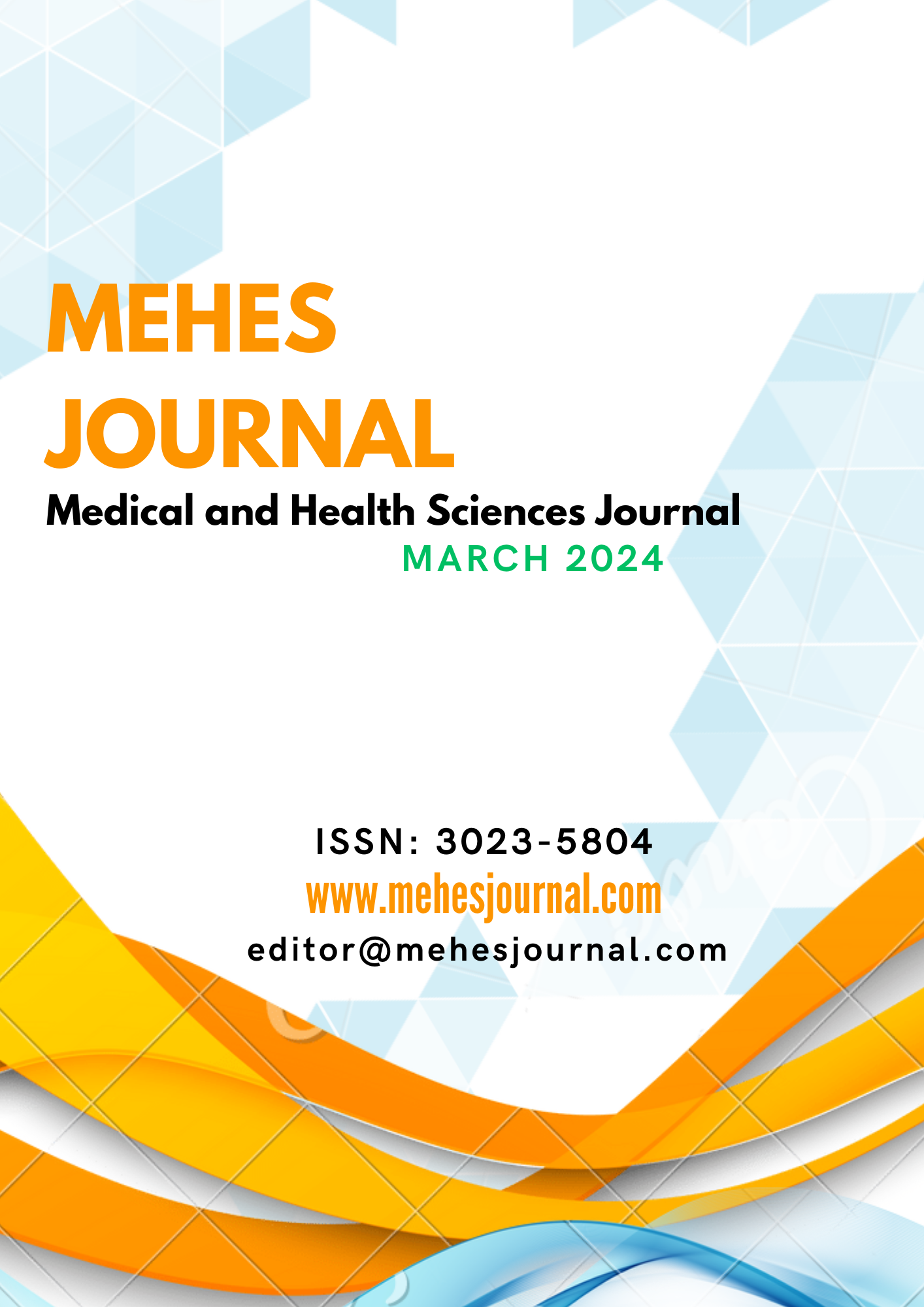Investigation of Perfusion Parameters In Coronary Artery Bypass Operations Performed With Cardiopulmonary Bypass. The Case of Harran University Hospital
Coronary Artery Bypass Surgery
DOI:
https://doi.org/10.5281/zenodo.12510577Keywords:
Cardiopulmonary bypass, Cardiovascular Surgery, Coronary Artery Bypass GraftingAbstract
Objective: In our study, we aimed to investigate the parameters of perfusion management in patients who were diagnosed with coronary artery disease and underwent cardiopulmonary bypass and coronary artery bypass surgery in the last 20 years in our center.
Material and Methods: For this study, a total of 485 patients (286 males and 199 females) over 18 years of age who underwent coronary artery bypass surgery with cardiopulmonary bypass support were included in this retrospective study. Patients were grouped according to the number of coronary vessels treated. KABCX1: Single-vessel bypass, KABCX2: Two-vessel bypass, KABCX3: Three-vessel bypass, KABCX4: Four-vessel bypass, KABCX5: Five-vessel bypass. Statistical analyses and comparisons of cross-clamp/min and Total/min values, as well as entry-exit pH, pO2, paCO2, K+, Hct and BE parameters were performed between these groups.
Results: When the data of a total of 485 patients were examined, statistical analysis of different parameters in KABCX1, KABCX2, KABCX3, KABCX4 and KABCX5 groups was performed. According to this analysis; Cross-clamp/min and Total/min values were found to be statistically significant (**p<0.001). The values of input-output pH, pO2, paCO2, K+, Hct and BE parameters were not statistically significant (p>0.05).
Discussion and Conclusion: We believe that safe perfusion can be achieved by keeping the values of pH, pO2, paCO2, BE, Hct and K+ parameters within the reference ranges, while keeping the cross-clamp/total pump times as short as possible in operations where the use of a heart-lung machine is required, such as coronary artery bypass surgery.
References
Bağış MZ. Açık Kalp Cerrahisinde Preoperatif Albümin Değerinin Renal Fonksiyonlar Üzerine Etkisi. Europeanatolia Health Sciences Journal. 2023;1(1):29-34.
Sun C, Kontaridis MI. Physiology of Cardiac Development: From Genetics to Signaling to Therapeutic Strategies. Curr Opin Physiol. 2018;1:123-139.
Sevinç S. Kardiyovasküler Sistem Hastalıkları ve Hemşirelik Yönetimi. N. Ovayolu, Ö. Ovayolu içinde, Temel İç Hastalıkları Hemşireliği ve Farklı Boyutlarıyla Kronik Hastalıklar. Adana: Çukurova Nobel Tıp Kitabevi. 2016.s.184-243.
Dülek H, Vural Z, Gönenç I. Kardiyovasküler hastalıklarda risk faktörleri. Jour Turk Fam Phy. 2018;09(2):53-58.
Diodato M, Chedrawy EG. Coronary artery bypass graft surgery: the past, present, and future of myocardial revascularisation. Surg Res Pract. 2014:2014:726158.
Tan A, Newey C, Falter F. Pulsatile Perfusion during Cardiopulmonary Bypass: A Literature Review. J Extra Corpor Technol. 2022;54(1):50-60.
Merkle J, Daka A, Deppe AC, Wahlers T, Paunel-Gorgulu A. High levels of cell-free DNA accurately predict late acute kidney injury in patients after cardiac surgery. PLoS One. 2019;14(6):e0218548.
TÜİK Ölüm Nedeni İstatistikleri, 2023. (Erişim Tarihi: 14.06.2024). http://www.tuik.gov.tr/PreHaberBultenleri.do?id=30626.
Shore-Lesserson L, Baker RA, Ferraris VA, Greilich PE, Fitzgerald D, Romanet P, et al. The Society of Thoracic Surgeons, The Society of Cardiovascular Anesthesiologists, and The American Society of ExtraCorporeal Technology: Clinical practice guidelines-anticoagulation during cardiopulmonary bypass. Ann Thorac Surg. 2018; 105(2):650-662.
Sniecinski RM, Bennett-Guerrero E, Shore-Lesserson L. Anticoagulation management and heparin resistance during cardiopulmonary bypass: A survey of Society of Cardiovascular Anesthesiologists members. Anesth Analg. 2019;129:e41–e44.
Hancock M, Pantin. EJ. Fundamentals of Cardiopulmonary Bypass Machine Equipment and Technique. In: Awad, MD, MBA, A.S. (eds) Cardiac Anesthesia. Springer, Cham. 2021;p.263–284.
Max SA, Çelik M, Durko A, Mahtab EAF. Weaning from cardiopulmonary bypass, decannulation, and closure. Multimed Man Cardiothorac Surg. 2021;2021.
Bağiş MZ, Amaç B. The Efficacy of Tranexamic Acid in Reducing Perioperative Drainage in Cardiac Surgery with Cardiopulmonary Bypass. Braz J Cardiovasc Surg. 2024;39(3):e20230181.
Filsoufi F, Rahmanian PB, Castillo JG, Bronster D, Adams DH. Incidence, topography, predictors and long-term survival after stroke in patients undergoing coronary artery bypass grafting. Ann Thorac Surg. 2008;85:862-70.
Sean P Clingan 1, James A Reagor 1 2, Nicholas J Ollberding. Optimal Sweep Gas to Blood Flow Ratio (V/Q) for Initiation of Cardiopulmonary Bypass in a Pediatric Patient Population: A Retrospective Analysis. J Extra Corpor Technol. 2020;52(2):112-117.
Alston RP, Cormack L, Collinson C. Metabolic acidosis developing during cardiopulmonary bypass is related to a decrease in strong ion difference. Perfusion. 2004;19(3):145-52.
Loor G, Rajeswaran J, Li L, Sabik JF 3rd, Blackstone EH, McCrae KR, Koch CG. The least of 3 evils: exposure to red blood cell transfusion, anemia, or both? J Thorac Cardiovasc Surg 2013;146(6):1480-1487.e6.
Surgenor SD, DeFoe GR, Fillinger MP, et al. Intraoperative red blood cell transfusion during coronary artery bypass graft surgery increases the risk of postoperative low-output heart failure. Circulation. 2006; 114(1 Suppl):I43-8.
Sheridan, Alice M.; Bonventre, Joseph V. Cell biology and molecular mechanisms of injury in ischemic acute renal failure. Current opinion in nephrology and hypertension, 2000;9(4):427-34.
Krogager ML, Torp-Pedersen C, Mortensen RN, Køber L, Gislason G, Søgaard P, et al. Short-term mortality risk of serum potassium levels in hypertension: a retrospective analysis of nationwide registry data. Eur Heart J. 2017;38(2):104-112.
Mezrow CK, Midulla PS, Sadeghi AM, Gandsas A, Wang W, Bodian C, et al.Quantitative electroencephalography: a method to assess cerebral injury afterhypothermic circulatory arrest. J Thorac Cardiovasc Surg. 1995;109(5):p.925-34.
Manasse E, Barbone A, Gallotti R. How to determine the correct placement of the retrograde cardioplegia catheter. Interact Cardiovasc Thorac Surg. 2002;1(1):28-9.
Downloads
Published
How to Cite
Issue
Section
License
Copyright (c) 2024 MEHES JOURNAL

This work is licensed under a Creative Commons Attribution 4.0 International License.











